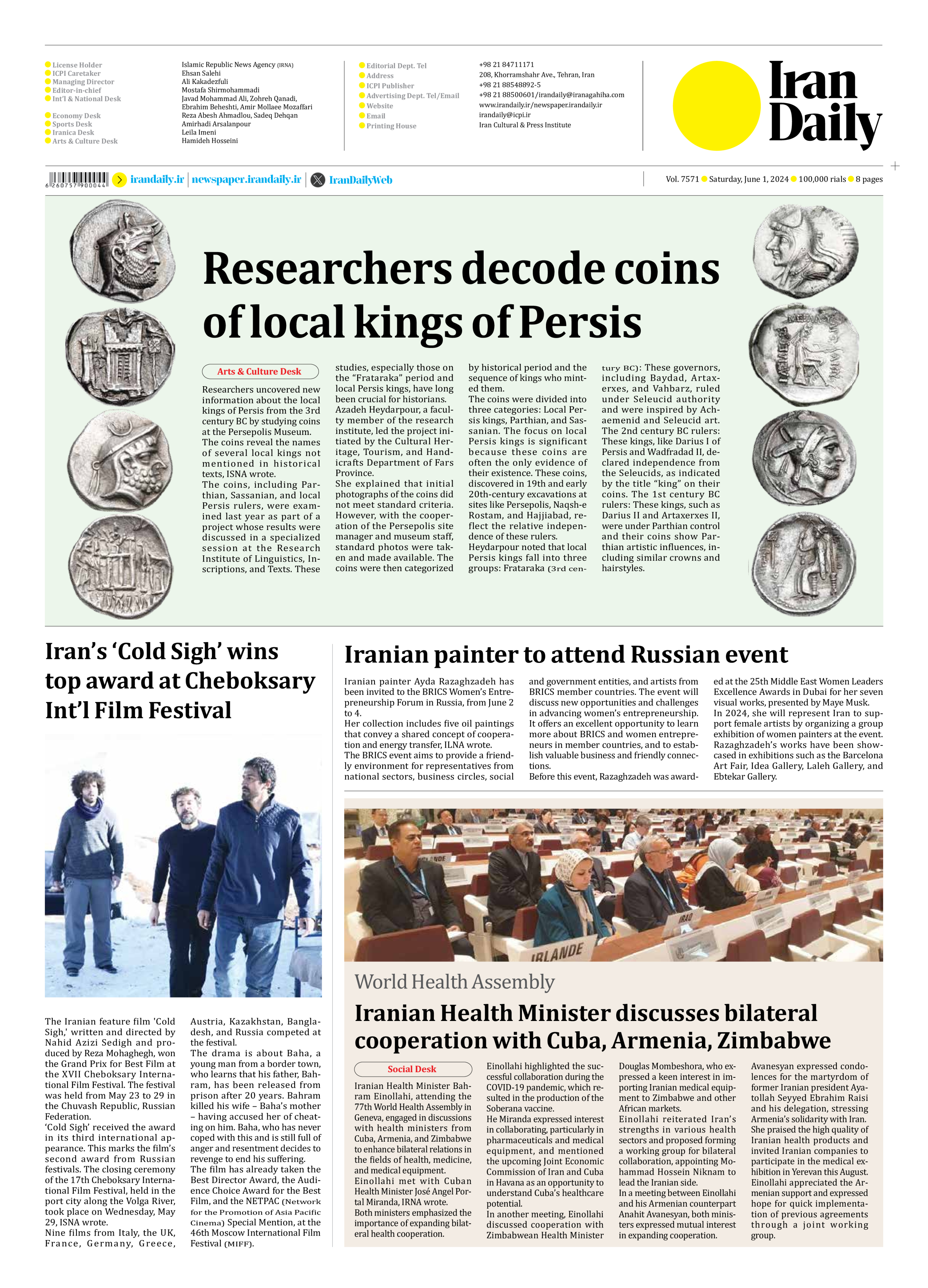
Copy in clipboard...
Researchers decode coins of local kings of Persis
The coins reveal the names of several local kings not mentioned in historical texts, ISNA wrote.
The coins, including Parthian, Sassanian, and local Persis rulers, were examined last year as part of a project whose results were discussed in a specialized session at the Research Institute of Linguistics, Inscriptions, and Texts. These studies, especially those on the “Frataraka” period and local Persis kings, have long been crucial for historians.
Azadeh Heydarpour, a faculty member of the research institute, led the project initiated by the Cultural Heritage, Tourism, and Handicrafts Department of Fars Province.
She explained that initial photographs of the coins did not meet standard criteria. However, with the cooperation of the Persepolis site manager and museum staff, standard photos were taken and made available. The coins were then categorized by historical period and the sequence of kings who minted them.
The coins were divided into three categories: Local Persis kings, Parthian, and Sassanian. The focus on local Persis kings is significant because these coins are often the only evidence of their existence. These coins, discovered in 19th and early 20th-century excavations at sites like Persepolis, Naqsh-e Rostam, and Hajjiabad, reflect the relative independence of these rulers.
Heydarpour noted that local Persis kings fall into three groups: Frataraka (3rd century BC): These governors, including Baydad, Artaxerxes, and Vahbarz, ruled under Seleucid authority and were inspired by Achaemenid and Seleucid art. The 2nd century BC rulers: These kings, like Darius I of Persis and Wadfradad II, declared independence from the Seleucids, as indicated by the title “king” on their coins. The 1st century BC rulers: These kings, such as Darius II and Artaxerxes II, were under Parthian control and their coins show Parthian artistic influences, including similar crowns and
hairstyles.







